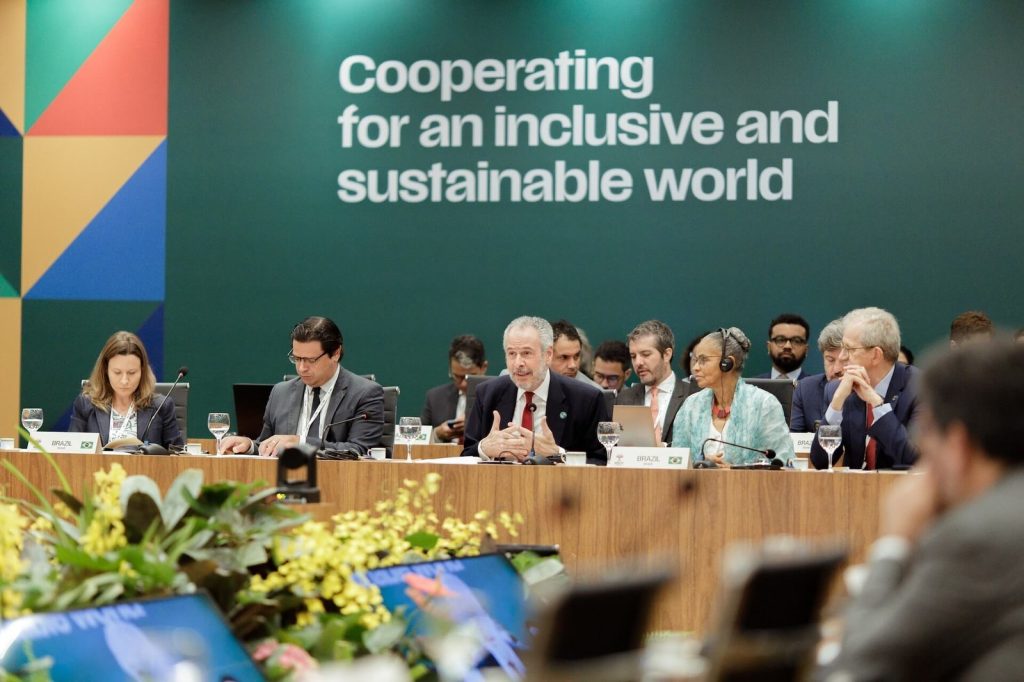
The 30th Conference of the Parties (COP30) to the UN Framework Convention on Climate Change (UNFCCC), scheduled for November 2025 in Belém, Brazil, arrives at a decisive moment for global climate action. With the 1.5°C temperature threshold slipping further out of reach and climate finance lagging far behind commitments, the urgency for collective ambition has never been greater. For Nepal—a nation contributing little to global emissions yet among the most climate-vulnerable—the summit offers more than a diplomatic stage. It is an opportunity to demand fairness, accountability, and the recognition that climate justice for the mountains is inseparable from the planet’s future stability.
Across the world’s highlands, the pace of warming is outstripping the global average. The Himalayas—often called the “Third Pole” for their vast ice reserves—are melting faster than ever, reshaping rivers, destabilizing slopes, and threatening lives far downstream. Scientists warn that if emissions continue unabated, much of the Himalayan cryosphere could disappear within decades, undermining Asia’s water security and altering regional weather systems.
In Nepal, these global shifts are felt daily: glacial lake outburst floods (GLOFs) and landslides increasingly endanger mountain communities, while erratic monsoons and prolonged dry spells disrupt agriculture and livelihoods in the Tarai–Madhesh plains. These cascading impacts expose the fragility of an ecosystem that sustains millions. For Nepal, COP30 is not just another conference—it is a call to safeguard the Himalayas, the source of life and balance for the entire planet.
Nepal’s Diplomatic Trajectory
Nepal’s role in global climate diplomacy has evolved from limited engagement to active leadership across multiple thematic fronts. Its consistent participation in COPs, often at the highest levels of government, reflects a deliberate effort to influence key decisions.
A major milestone has been integrating the mountain agenda into global climate discourse, aligning Vulnerable Mountain Nations (VMNs) within frameworks like the Least Developed Countries (LDCs) Group and the G77 and China. Nepal has also pursued international legal avenues to hold major emitters accountable, notably engaging in the International Court of Justice (ICJ) process on climate obligations. Domestically, the country has reinforced its climate commitments through updated Nationally Determined Contributions (NDCs) and a pledge to achieve net-zero emissions by 2045.
The Sagarmatha Sambaad has become a signature platform, projecting Nepal as a global convener of climate dialogue and sustainable development, reinforcing environmental stewardship as a core component of its foreign policy. COP30 presents the challenge—and opportunity—to convert Nepal’s moral and ecological authority into tangible diplomatic influence.

Core Pillars of Nepal’s COP30 Agenda
Nepal’s strategic focus at COP30 rests on four interconnected pillars: securing climate finance, advancing adaptation and mountain resilience, ensuring climate justice through Loss and Damage mechanisms, and promoting mitigation alongside regional and global cooperation.
1. Climate Finance and Accessibility
Addressing the severe climate finance gap is urgent. Nepal will need over US$100 billion by 2050 to achieve its National Adaptation Plan (NAP) and NDC targets. Effective operationalization of the New Collective Quantified Goal (NCQG)—mobilizing at least US$300 billion annually by 2035, scaling toward US$1.3 trillion—is critical.
Aligned with its climate justice principles, Nepal continues to call for predictable, grant-based, non-debt-inducing public finance, particularly for adaptation and Loss and Damage. Complex procedures, co-financing obligations, and institutional limitations currently slow access to established funds like the Green Climate Fund (GCF) and Adaptation Fund, emphasizing the need for advocacy on vulnerability-based allocation and transitional support as Nepal transitions from LDC status.
2. Adaptation and Mountain Resilience
Adaptation is central to Nepal’s climate strategy. Beyond glacial retreat, the country faces a “silent emergency”: shrinking mountain springs, mid-hill water shortages, and recurring droughts in the Tarai–Madhesh lowlands. Addressing these requires sustained investment, scientific collaboration, and action on water conservation and springshed management.
Nepal must champion a mountain-specific adaptation framework within the Global Goal on Adaptation (GGA), ensuring high-altitude vulnerabilities are fully recognized. With Himalayan rivers sustaining nearly two billion people downstream, safeguarding mountain ecosystems is a regional and global imperative. Moreover, integrating climate resilience for migrant workers—linking labour protection with climate risk assessment in destination countries—can reinforce Nepal’s holistic adaptation diplomacy.
3. Climate Justice and Loss and Damage
Despite contributing less than 0.1% of global emissions, Nepal bears disproportionate climate impacts. COP30 should focus on operationalizing the Fund for Responding to Loss and Damage (FRLD) and the Santiago Network, advocating for predictable funding and direct access for the most vulnerable communities.
Significant progress has been made: at its 7th meeting in Manila, the FRLD Board approved the Barbados Implementation Modalities (BIM), enabling direct budget support and access via accredited entities under the Adaptation Fund, Global Environment Facility (GEF), and GCF. With the first funding call expected at COP30, Nepal must act swiftly—empowering institutions and mobilizing national entities like the National Trust for Nature Conservation (NTNC) and Alternative Energy Promotion Centre (AEPC) to implement projects that turn commitments into tangible resilience.
Loss and Damage must go beyond financial compensation to encompass social, ecological, and cultural dimensions—protecting heritage, identity, and biodiversity as integral parts of resilience.
4. Mitigation and Cooperation
Nepal’s progressive policies—anchored in its 2045 net-zero goal—offer pathways for green transformation. The operationalization of Article 6 mechanisms can unlock investments in clean energy, carbon markets, and nature-based solutions. Nepal’s bilateral carbon trading initiatives, such as with Sweden, demonstrate how climate cooperation can catalyze both mitigation and sustainable development. Ensuring transparency and strong safeguards remains key as these frameworks mature.
Regional and Global Solidarity
The Sagarmatha Sambad and the resulting “Sagarmatha Call for Action” have solidified Nepal’s leadership among VMNs, emphasizing 1.5°C targets and glacier protection. For meaningful progress, Nepal must strengthen transboundary collaboration with India and China by establishing shared early warning systems, coordinated river-basin management, joint research, and systematic data sharing, enhancing resilience and preparedness against common climate risks.
Globally, Nepal should turn symbolic recognition of mountain ecosystems into tangible support through alliances with Hindu Kush, Andes, and Small Island Developing States (SIDS) nations. Reviving the Sagarmatha Sambad as a recurring pre-COP dialogue could strengthen mountain-to-marine solidarity, uniting high-altitude nations under a shared advocacy platform.
Domestic Resilience: The Foundation for Global Credibility
Nepal’s global credibility on climate action hinges on domestic coherence. Ambitious strategies and plans—such as the Long-Term Strategy for Net-Zero GHG Emissions and the NAP—face implementation challenges due to weak institutional capacity, frequent leadership changes, bureaucratic bottlenecks, fragmented coordination, and limited financial absorption.
Strengthening climate governance is therefore essential. This includes reforming Public Finance Management (PFM) systems and enhancing the operational capacity of dedicated national institutions for transparent and efficient fund management. Ensuring that international climate finance reaches provincial and local levels allows governments to integrate climate priorities into development planning effectively.
Devolving decision-making, expanding direct access through accredited national entities, and actively engaging women, youth, and Indigenous Peoples as key agents of change are critical to fostering inclusive, context-specific, and sustainable climate action.
Conclusion: Advancing Mountain Justice at COP30
COP30 presents Nepal with a defining opportunity to transform moral authority—anchored in the Sagarmatha Sambad and its climate advocacy—into tangible action. The Himalayas, the planet’s third-largest repository of ice, are warming faster than almost anywhere else, threatening water security, biodiversity, and livelihoods across the region. This reality demands that mountain issues take centre stage in global negotiations.
Nepal must champion a renewed “Mountain Alliance” that secures predictable, grant-based adaptation finance, fully operationalizes the Loss and Damage Fund, strengthens early warning systems, and promotes technology-sharing for fragile, high-altitude ecosystems. Assertive diplomacy, transparent implementation, and robust regional collaboration—particularly with India, China, and other mountain nations—are essential to bridge institutional gaps and deliver genuine mountain justice.
For Nepal, COP30 is not just about accessing resources; it is about leading a science-driven, equitable movement that underscores a simple truth: climate justice runs unequivocally through the mountains, where the world’s water towers rise.